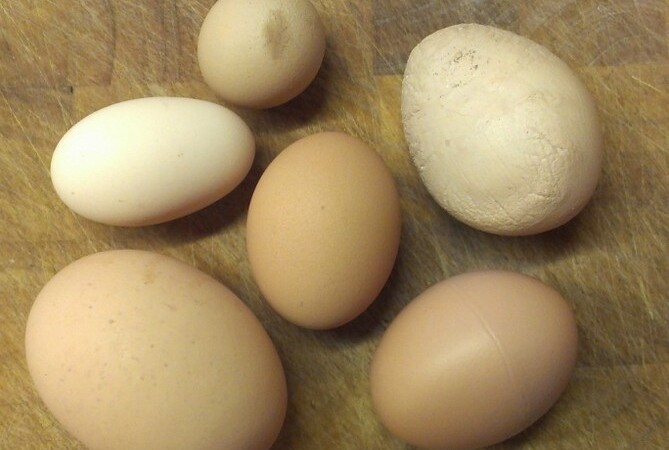

Factors that affect egg size are a sequenced relationship of firstly the breed potential followed by the lighting programme, both during the rearing period and when coming into lay. It is only well into lay that the influence of feed can have impact. The fine tuning of your flock’s diet may be all that is required to adjust the average egg size into the size category needed to improve your business’ viability.
Welfare matters: Producing too many eggs which are too large can cause stress, leading to feather loss and problems with thermo-regulation. When the outside temperature drops, the birds will eat more, compounding the problem of larger eggs.
Tradition versus a new approach: As the birds age egg production naturally dips while egg size increases. There are therefore advantages to altering feed to control egg size, while supporting bird welfare and shell quality.
Conventional thinking has been to step down the energy and nutrient content of diets after birds reach their optimum weight and production has started to decrease. However, over the last ten years the iso-kinetic range of diets has gained in popularity; the energy content is maintained, while most other nutrient levels are reduced.
Birds generally eat to their energy needs and a low energy diet encourages overfeeding. Whereas energy intake has little effect on egg size, decreasing the nutritional density of the diet can limit further increases in egg size.
Ingredients:The bulk of feed consists of grain and proteins, along with oils and minerals to keep the bird healthy and nourished. While the overall composition of the diet influences egg size, the nutrients which most affect it are:
Protein: comprised of amino acids of which methionine has the most significant effect on egg size and mass. Rations containing less than 15 percent are liable to give smaller egg sizes. Although this is not likely to be a problem with commercially compounded rations, home mixers should keep a careful check on the point.
Oils: some oils are bound up within certain materials, and some oils are added on top. Oils have a range of complex fatty acid chains and selecting the right oil for the right fatty acid can influence egg size. A significant fatty acid is Linoleic acid.
Linoleic acid: The use of higher levels can have a positive effect on egg weight.
Calcium: whist it does not necessarily affect egg size it is important to support larger egg sizes with sufficient calcium in the feed.
Lack of water: Water that is too hot, too cold or dirty will be unpalatable to the birds-they will not drink enough, food consumption will fall and egg sizes will suffer. Keep the water fresh and clean and look out for any faulty drinkers supply.
Laying-house temperature: Experiments have shown that 1 oz. per dozen less at temperatures over 70oF than at 55oF. It is important, therefore, to keep the house as cool as possible during hot weather.
Disease: Most disease will upset the birds, giving decreased feed consumption. This can only lead to lower production and egg size. Good hygiene and management will reduce this risk.
Age of maturity: Birds which mature early, such as those reared during increasing day-length, will lay a smaller egg than bird reared on a constant day-length or a decreasing day-length.
 Contact Jaguza Support
Contact Jaguza Support